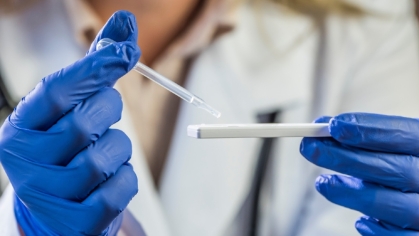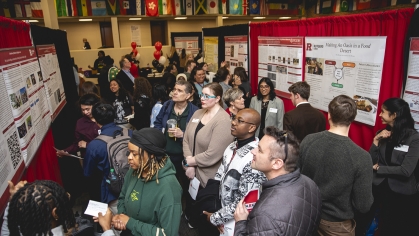Researchers Say Consistency in Context is Crucial in Ensuring that Analysts Accurately Process Forensic DNA Data
Research led by Rutgers University‒Camden scholars Catherine Grgicak and Desmond Lun finds that since genetic material collected from a crime scene often comes from more than one person, evaluating forensic DNA evidence is not absolute, but contextual, to correctly reveal the identity of a criminal.
“It is not to say that the way that people are doing it is incorrect, it is to say that care needs to be taken,” says Grgicak, the Henry Rutgers Chair in chemistry at Rutgers–Camden.
The use of forensic DNA can help link someone to a crime or rule out a person as a suspect.
“When a forensic DNA analyst testifies in court, they do so by providing the court with a number describing the weight-of-DNA-evidence against the suspect,” Grgicak explains. “That number is obtained by dividing how likely it is to get that DNA data if the suspect donated the DNA by the likelihood of obtaining the DNA data had they not contributed.”

Catherine Grgicak leads the Rutgers‒Camden Laboratory for Forensic Technology Development and Integration.
The analyst calculates weight-of-evidence values after applying a set of assumptions. Grgicak says one of the most important assumptions the analyst must make is regarding the total number of DNA contributors that explain the forensic data. If the assumption is not reasonable, the weight-of-evidence can be incomplete or incorrect.
“Assuming too few contributors could force the weight-of-evidence to a value that suggests the suspect ought to be excluded as a contributor to the evidentiary stain, when in fact they are a perpetrator,” says Grgicak.
The possibility that the crime victim’s DNA could be in the mix makes it even more complicated. If there is information to suggest they also might be part of the DNA collected from the scene, that assumption must also be accounted for since it can also shift the weight-of-evidence.
As an example, Grgicak says, if a nurse collects a DNA sample from a sexual assault victim, that swab is sent to a DNA crime lab. Then, the analyst must assume whether that victim’s DNA is part of the DNA profile. This assumption must be considered while determining the total number of contributors and while calculating the weight-of-evidence.
“The analyst needs to make an assumption about whether or not to be expecting the victim’s DNA profile in that evidence,” Grgicak says. “If the analyst knowingly or unknowingly changes the assumption between determining the total number of contributors and calculating the weight-of-evidence, the final result can be off by substantive levels.”

Desmond Lun
“The need to adopt such complex interpretation strategies is the result of the complexity of forensic DNA data,” says Lun, a Rutgers‒Camden computer science professor.
“It’s not that the current mixture interpretation methods are wrong,” says Grgicak. “But there is room for improvement. The contextual part is important because when an analyst or expert testifies to some sort of weight-of-evidence against a suspect, the jury tends to believe that. DNA analysis has the reputation of being the gold standard approach to testing. However, with improved technology, the DNA signal has become so complex that interpretation of the sample has become more and more complicated.”
Their research, “The a Posteriori Probability of the Number of Contributors When Conditioned on an Assumed Contributor,” conducted along with Ken Duffy of the University of Ireland, is published in Forensic Science International: Genetics.
The researchers offer a solution to the problem of interpreting DNA from multiple people. In other research, the team developed a forensically relevant single-cell laboratory process and interpretation strategy. The process of obtaining DNA data one cell at a time has received a provisional patent from the United States Patent and Trademark Office and funding from the National Institute of Justice.
The team’s single-cell research, “Towards Developing Forensically Relevant Single-Cell Pipelines by Incorporating Direct-To-PCR Extraction: Compatibility, Signal Quality, and Allele Detection,” has recently been published in the International Journal of Legal Medicine.
“It is typically the subjective decisions or assumptions made by humans, such as how to run the data and what assumptions to apply, that cause the weight-of-evidence to vary across laboratories,” says Grgicak. “By developing a single-cell approach and interpretation strategy, we aim to alleviate the need to make such assumptions at all, therein solving the DNA mixture conundrum.”



